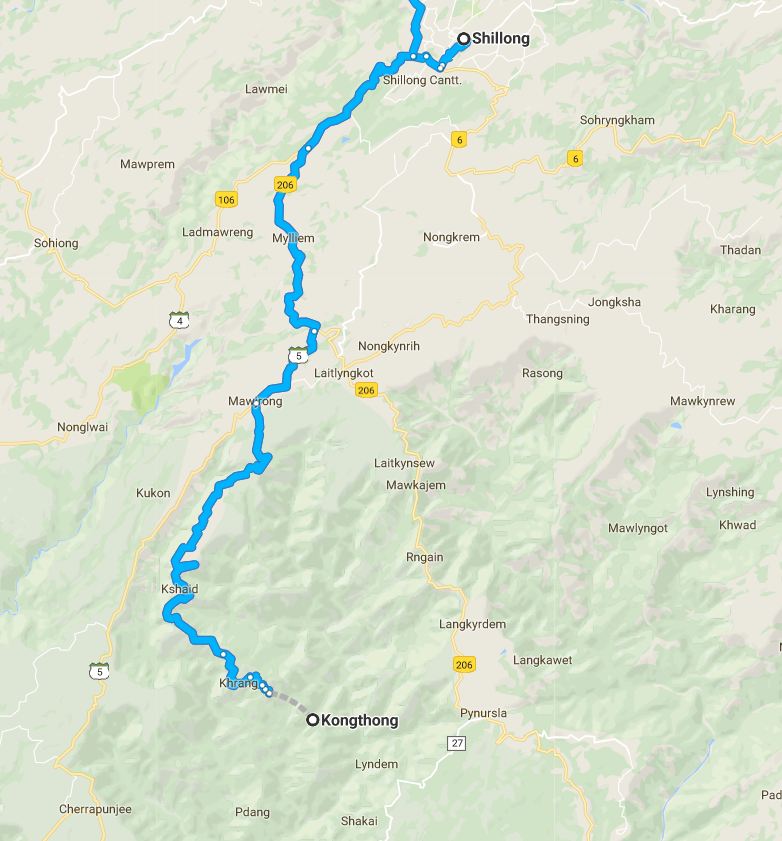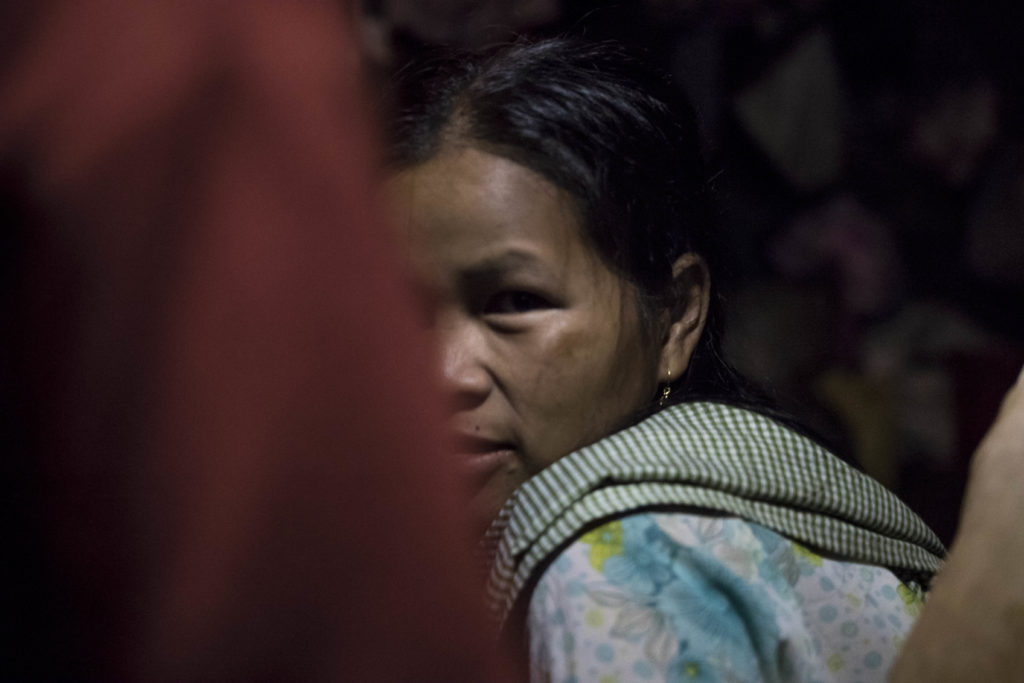Who are we? How was the first society? Which was the first language? Aren’t words and languages made out of random noises?
Why do our names make sense? What if they were just random tunes? What if your name was a beautiful song, then what? Is there any point thinking about it when it can’t be true?
Welcome to Kong Thong. The land of fantasies.
What is Kong Thong?
Even though it sounds like a South East Asian city or maybe Hong Kong, the mystic Kong Thong is tucked in the interiors of the plateau of Meghalaya.
And what’s mystic about this village is this age old tradition where they call each other not by names but by tunes.
But we weren’t sure about any of this. We only found a little paragraph on this information in a book, rest no assurance if any of this was true.
As nothing much was available on the place over the internet and the locals too were clueless we were wondering if the village even exists.
WHERE IS IT? HOW TO REACH?
55 km south from Shillong, on the way to Cherrapunjee, a detour takes you to Khatarshnong district of Khasi tribe. There are 36 villages in this district, and one of them is Kong Thong. Having no sign board and tucked in deep in the valley it took us 5 hours to reach the place. It is a beautiful drive that takes you through landscapes, meadows, jungles, and clouds.
Since it becomes dark by 4-5 pm in Shillong, make sure you leave for Kong Thong from Shillong early in the morning. Especially since the fact that the villagers haven’t seen much of outsiders here, they, out of insecurity, hide inside their houses when they see some strangers in their place at night. There is no bus service, but some shared tata sumos do go to Kong Thong at usually 9-10 in the morning and return to Shillong at 5-6 in the evening. The nearest railhead is in Guwahati, 120 km from Shillong. And it takes about 27 hours by train from New Delhi. The nearest airport too is in Guwahati.

TELL ME MORE
Kong Thong has a population of 350 residents, with over 120 households settled in different parts of the valley.
It is a self sustained village. The only major occupation here is agriculture, and the main produce is yams, broom-grass and honey.
In case you ever wondered, broom-grass is what house brooms are made of. They grow in abundance in Meghalaya. One begins to feel that the culture of cleanliness must have started from here since, the cleanest village in Asia, Mawlynnong, is just next door.
Mostly people here wear slippers because shoes are available only in Shillong and a trip there is an entire day process. Schools are here till 8th standard, and among languages, they teach only Khasi and English. But since they don’t practice it much, nobody really speaks English well in the village, and are too hesitant to even try.
There are 36 villages in the district, and 12 headmen who have some 3-4 villages under their supervision. The headman of Kong Thong however, is responsible solely for Kong Thong. All the 36 villages are connected by road and by treks with each other.
There’s so much more that we’ll get to, but let me take you straight to the 3 points that makes Kong Thong absolutely special and incomparable.

The 3 Uncommon Things About Kong Thong
1. Songs Instead of Names
Lost really long in time, Kong Thong has this age old tradition of calling each other by tunes instead of names.
Like you know, in some world of fantasy, if I have to call you, I swing across the ropes and yell “kukukukooooooooo”!
And then you respond with a specific confirmative sound. That’s what is here, without the swinging around though. Getting just a little bit realistic.
Each person has his own distinct tune given to him by his mother when he was born.
They call this tune Jingrwai Lawbei.
As the child is born, the mother feels a lot of love and emotions. To express her love she hums a tune, which is inspired by the love for her child. The composition of the song starts from scratch and takes anywhere from a week to months to complete. She also seeks beautiful sounds from the nature, the waterfall, the birds and wherever she possibly can for inspiration.
While composing it is compared with other tunes and it is kept in mind that no two people have the same tune.
After composition, the song is gifted to the child, and the title of the song becomes his name. The child too responds to the tune and learns to resonate faster than words.
Apart from this they have usual verbal names like us and also written names to lead a documentable life like us.
So when they have to converse with each other, when they have to talk about each other or when they have to write their name somewhere they have Khasi names like Jipson, Barailang, Rothell.
But when they have to call somebody at distance, or when the mother has to call her child who’s gone out to play; when a person has to call his brother who is lost in the jungle they use Jinwei Lewbei.
Legend says that the villagers would make use of that to find out each other’s location while hunting, without letting the prey know.This tune is an integral part of their childhood and their life. Consequently if there are 300 people in the village, there are 300 unique tunes. Names can be the same, but the tunes will always be unique.
Like any other song, there can be little variations to the tune according to the mood and sure it sees a lot of them in the lifetime.
But still the song remains the same. And when the man dies the song dies.
There is no written records for these tunes. So to make things easier, today’s generation keeps each other’s tune recorded and uses it as a ringtone for the person calling. And more so because of this the tradition is getting a little left behind.
2. Living Root Bridge
As the urban world is turning into a fight between man vs nature, Meghalaya shows us the finest example of coexistence with nature. The only way of survival that mankind has ever known.
Making very smart use of nature they make natural living root bridges to cross the river. A living root bridge is made by joining the roots of two rubber trees together and letting them grow in that manner. Years of patience and maintenance results in a masterpiece like this.
And the way this is even more effective is that unlike other bridges, living root bridges grows stronger with time. And a 50 year old bridge can hold as many as 70 people at a time. They can be as old as 200 years, and they start getting reliable by the age of 20. There are hundreds of such bridges found in Meghalaya, and the age old technique to grow them is passed on from generation to generation. It wouldn’t be wrong to call this the biggest natural heritage of India.
These natural living bridges are found only in Meghalaya in the entire world.
Taking a leisure swim in the crystal clear and absolutely peaceful blue Phylad river flowing under the root bridge holds you still in the world of magic. The private natural pool in the middle of the jungle rids you off all your worries for the moment. The whistlings and callings of the villagers mixed with the sounds of the birds, the river, and nature is all you could and want to hear.
3. Breaking Patriarchy? Matriarchal Society
While the rest of the country is trying to break the norms of patriarchy; while there are feminists who fight for their right, there are others fight who against it just because they have a problem with the label “feminist”.
It’s been a long and gradual process but things are changing.
But behold! Here in Kong Thong they have a matriarchal society where the woman is the head of the family. The youngest daughter of the family inherits most of the property and the eldest woman of the family has the last say in important family decisions. The husband moves to the wife’s house after marriage and the children carry the mother’s surname. It was a very refreshing change. Women were mostly heading the shops, working happily in the fields with the child tugging on to them. Though shy, they were still more open to talk to.
It was a really free and serene environment to be in. Carefreeness and a feeling of satisfaction prevails here. There’s a feeling of respect for women and men equally. It brings attention to the fact that the point behind feminism or patriarchy isn’t/shouldn’t be to put the other sex down but to build a social structure where there’s respect for everybody alike.


Staying at one place, living a specific kind of life shows you things specific to one part of the huge world.
But traveling to other places shows you a variety of situations, circumstances and ways the people handle them that you didn’t even think of noticing before. And when we develop an understanding, empathise with others it is then that we create a better environment to live in. We absolutely love to travel to different and such extreme places which broadens horizon to another possibility.Traveling to the absolutely beautiful Meghalaya and reaching the mystic Kong Thong and realizing that the fantasy was actually real felt like a dream. And capturing it in our passion, making a documentary out of it is what I live for. That’s what lets me breathe.



